NAVYPEDIA
 Support the project with paypal
Support the project with paypal
Photo

Aréthuse 1976 Many thanks to Wolfgang Stöhr for additional information on this page.
Ships
| Name | No | Yard No | Builder | Laid down | Launched | Comp | Fate |
|---|---|---|---|---|---|---|---|
| Aréthuse | S635 | Q64 | Arsenal de Cherbourg | 3/1955 | 9.11.1957 | 1.2.1959 | stricken 4.1979 |
| Argonaute | S636 | Q65 | Arsenal de Cherbourg | 3/1955 | 29.6.1957 | 23.10.1958 | stricken 7.1982 |
| Amazone | S639 | Q66 | Arsenal de Cherbourg | 12/1955 | 3.4.1958 | 6.7.1959 | stricken 6.1980 |
| Ariane | S640 | Q67 | Arsenal de Cherbourg | 12/1955 | 12.9.1958 | 16.3.1960 | stricken 3.1981 |
Technical data
| Displacement standard, t | 400 |
|---|---|
| Displacement normal, t | 543 / 669 |
| Length, m | 49.6 |
| Breadth, m | 5.80 |
| Draught, m | 4.00 |
| No of shafts | 1 |
| Machinery | 2 SEMT-Pielstick diesel-generators, 1 electric motor |
| Power, h. p. | 1060 / 1300 |
| Max speed, kts | 12.5 / 16 |
| Fuel, t | diesel oil |
| Endurance, nm(kts) | |
| Armament | 4 - 550 TT (bow, 8) |
| Electronic equipment | Calypso radar, DUUA-1 sonar |
| Complement | 39 |
| Diving depth operational, m | 180 |
Standard scale images

Aréthuse 1960

Aréthuse 1970

Argonaute 1980
Graphics
Project history
From their earliest conception the Aréthuse class were designated sous-marins de chasse. They were, therefore, the world's first hunter-killer submarines designed as such, and marked a significant departure from the ocean-going Narval class Designed specifically for the Mediterranean, they were to be based at Mers-el-Kebir to prevent enemy submarines infiltrating the extensive mercantile traffic between metropolitan France and the colonies in North Africa.
The staff requirements demanded a 100% submarine with a small silhouette and excellent manoeuvrability. They also specified the ability to dive deep and fast, to carry out operations at snorkel depth, and to maintain high speed for an hour when dived. Advanced sensors were to provide data for a well-equipped action information centre.
Although in conception the Aréthuse class was clearly influenced by the German Type XXIII design, they were bigger boats with higher submerged speed and a heavier torpedo armament.
They were the first French submarines to adopt diesel-electric propulsion. Two groups of electro-generators producing 337kW drove a single large electric motor of 1300hp. The generators and auxiliaries had spring suspension, while the electric motor was coupled directly to the shaft. This resulted in near-silent operation.
Modernizations
1965-1970, all: - DUUA-1 sonar; + DUUA-2 (active), DUUA-2 (passive), DUUX-2 sonars
Naval service
No significant events.
Many thanks to Wolfgang Stöhr for additional information on this page.
 HOME
HOME FIGHTING SHIPS OF THE WORLD
FIGHTING SHIPS OF THE WORLD FRANCE
FRANCE SUBMARINES
SUBMARINES ARÉTHUSE attack submarines (1958 - 1960)
ARÉTHUSE attack submarines (1958 - 1960)
